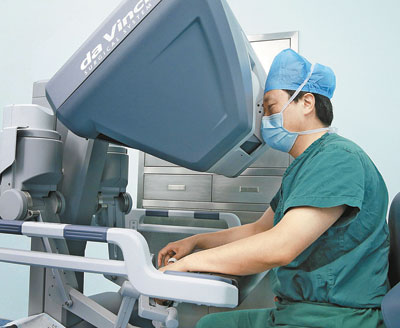|

CHINA’S health care sector is growing at more than double the pace of the overall economy, according to the CEO of global health care conglomerate Johnson & Johnson.
“In terms of growth, China does represent the No. 1 global opportunity [for us],” CEO Alex Gorsky told CNBC at the Asia-Pacific Economic Cooperation (APEC) summit in Beijing on Monday.
“What we’re seeing actually is a pick-up in growth, and in China if you look at the overall market place for health care, it’s growing at around 15 percent [per year],” he added.
China’s gross domestic product grew 7.3 percent year on year in the third quarter, its slowest pace since the global financial crisis. The reading was below the government’s 7.5 percent full-year target and a far cry from the double digit gains China enjoyed in recent years.
But Johnson & Johnson’s Gorsky told CNBC there are a number of factors still driving double digit growth in China’s health care sector, where his company has US$3 billion worth of business.
“One is an ageing population, there are about 150 million people in China over the age of 65 today and that’s projected to rise to 350 million in the next 20 to 30 years,” he said.
Elderly people tend to have greater medical needs, which should drive demand for health care services and medical devices.
“I completely believe that the market could be growing that quickly,” agreed Benjamin Cavender, senior analyst at China Market Research Group. “Although the growth rate is highly dependent on what segment of the market companies are trying to serve. Some areas are growing very fast and others not as quickly.”
Cavender pointed out that the Chinese Government has spent half a trillion dollars over the past five years reforming its health care system, and making healthcare more inclusive for all sections of Chinese society, providing a major boost for the sector.
“The government is in the process of increasing some of the subsidies for basic medical coverage by 14-15 percent this year…and scaling up the number of county level clinics people can go to get basic care,” he said.
“You’re talking about big spending and that creates opportunities for drug makers and medical device companies,” he added.
There are a number of headwinds for the development of China’s health care sector, Cavender said, including severe underfunding for hospitals and stiffer competition for foreign firms selling medical devices in China as local companies become more sophisticated.
“Foreign companies are having to rethink their business models and set up more joint ventures and China-based research & development centers, to try and still get a piece of that market,” said Cavender.
Johnson & Johnson’s Gorsky said his firm recently announced the start-up of a new innovation center in China.
“Versus our model in the past where we tended to bring [talent] from developed markets to China, what we want to do is seek out the local unmet need — for things like lung cancer — and actually have R&D scientists here in China to develop and discover,” he said.(SD-Agencies)
|

